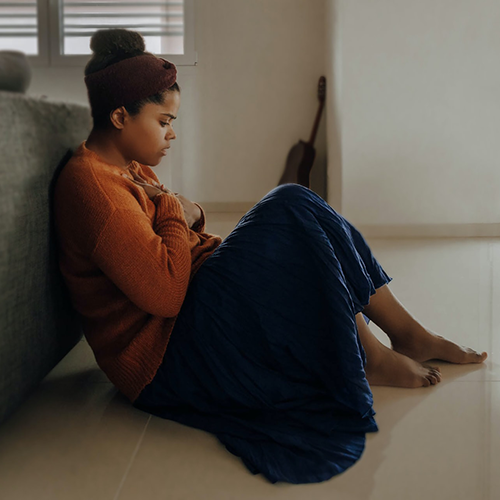 When meeting with all patients, please consider the following:
When meeting with all patients, please consider the following:
All children experience some worries. Anxiety in children is expected and normal at specific times in development. For example, from approximately age 8 months through the preschool years, healthy youngsters may show intense distress (anxiety) at times of separation from their parents or other people with whom they are close.
Young children may have short-lived fears, such as fear of the dark, storms, animals, or a fear of strangers.
Anxious children are often overly tense or uptight. Some may seek a lot of reassurance, and their worries may interfere with activities. Parents should not dismiss their child's fears.
Because anxious children may also be quiet, compliant, and eager to please, their difficulties may be missed. Parents should be alert to the signs of anxiety so they can intervene early to prevent complications.
We would consider treatment for anxiety when the symptoms of anxiety start to interfere with daily functioning and relationships.
There are quite a few different types of anxiety in children.
Symptoms of separation anxiety include:
- Constant thoughts and intense fears about the safety of parents and caretakers
- Refusing to go to school
- Frequent stomachaches and other physical complaints
- Extreme worries about sleeping away from home
- Being overly clingy
- Panic or tantrums at times of separation from parents
- Trouble sleeping or nightmares
Symptoms of phobia include:
- Extreme fear about a specific thing or situation (ex. dogs, insects, or needles)
- Fears causing significant distress and interfering with usual activities
Symptoms of social anxiety include:
- Fears of meeting or talking to people
- Avoidance of social situations
- Few friends outside the family
- Performance anxiety
- Not wanting to leave home or go to school
Other symptoms of anxious children include:
- Many worries about things before they happen
- Constant worries or concerns about family, school, friends, or activities
- Repetitive, unwanted thoughts (obsessions) or actions (compulsions)
- Fears of embarrassment or making mistakes
- Low self-esteem and lack of self-confidence
- Rigid with routine and has difficulty with change and transitions
Anxiety problems in children can be treated. Early treatment can prevent future difficulties, such as loss of friendships, failure to reach social and academic potential, and feelings of low self-esteem.
Treatments may include a combination of the following:
- Individual psychotherapy
- Family therapy
- Medications
- Behavioral treatments
- Consultation to the school
If anxieties become severe and begin to interfere with the child's usual activities (for example separating from parents, attending school, and making friends), parents should consider seeking an evaluation from a qualified mental health professional or a child and adolescent psychiatrist.
Screening
According the AACAP practice parameter, you may use a checklist based on the DSM-IV criteria to evaluate anxiety. The Spence Children's Anxiety Scale (SCAS) is a standardized screening tool that is available for free.
There are also a variety of paid standardized screening tools for anxiety, including the Multi-dimensional Anxiety Scale for Children (MASC), the Screen for Child Anxiety Related Emotional Disorders (SCARED), and the Anxiety Disorders Interview Schedule for DSM IV Child Version (ADIS).
Children and teens 12-17 years old, recommend the GAD-2 and GAD- 7:
For adolescents 12-17 years old, recommend the PHQ 9.
For children under 12, the USPSTF does not recommend any routine application of screening tools in general medical settings. If there are concerns a referral to a qualified mental health professional or child and adolescent psychiatrist should be made.
Resources for Parents
- AACAP Facts for Families: The Anxious Child
- Visit the Anxiety and Depression Association of America at www.adaa.org.
- The National Institute of Mental Health website has a variety of information about anxiety disorders, including easy-to-read publications. Visit the NIMH anxiety page.
- American Academy of Child & Adolescent Psychiatry (AACAP) Anxiety Disorder Resource Center